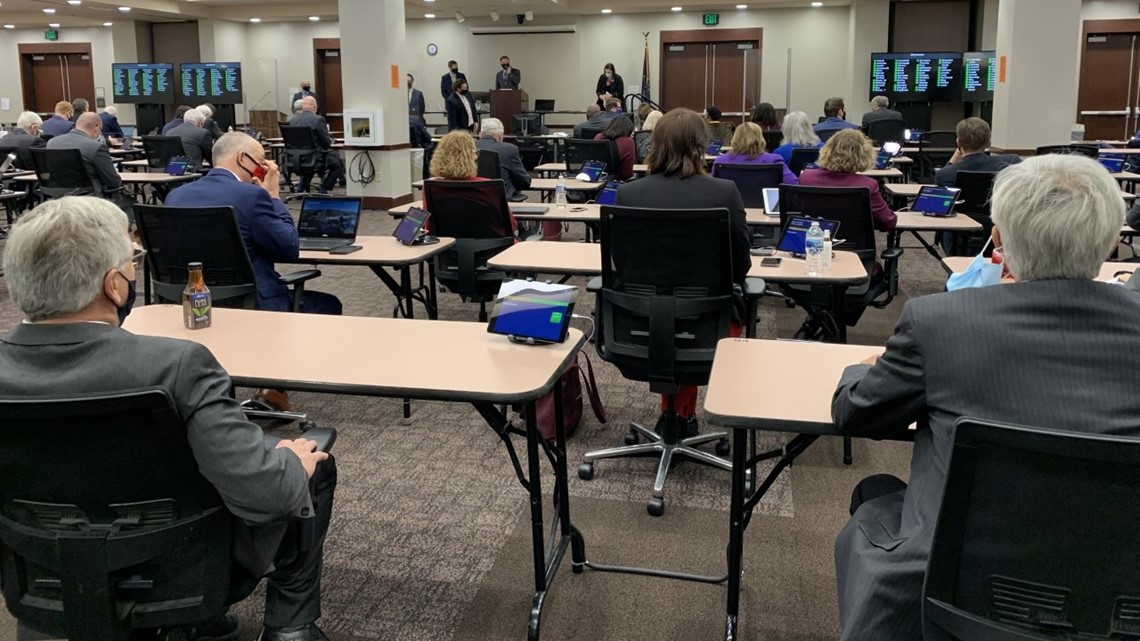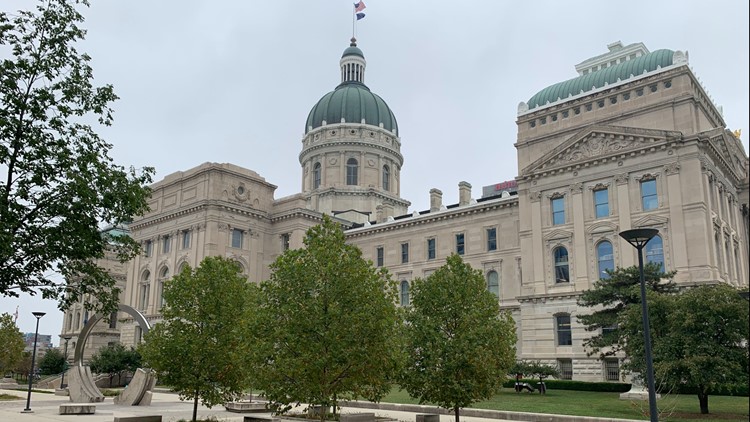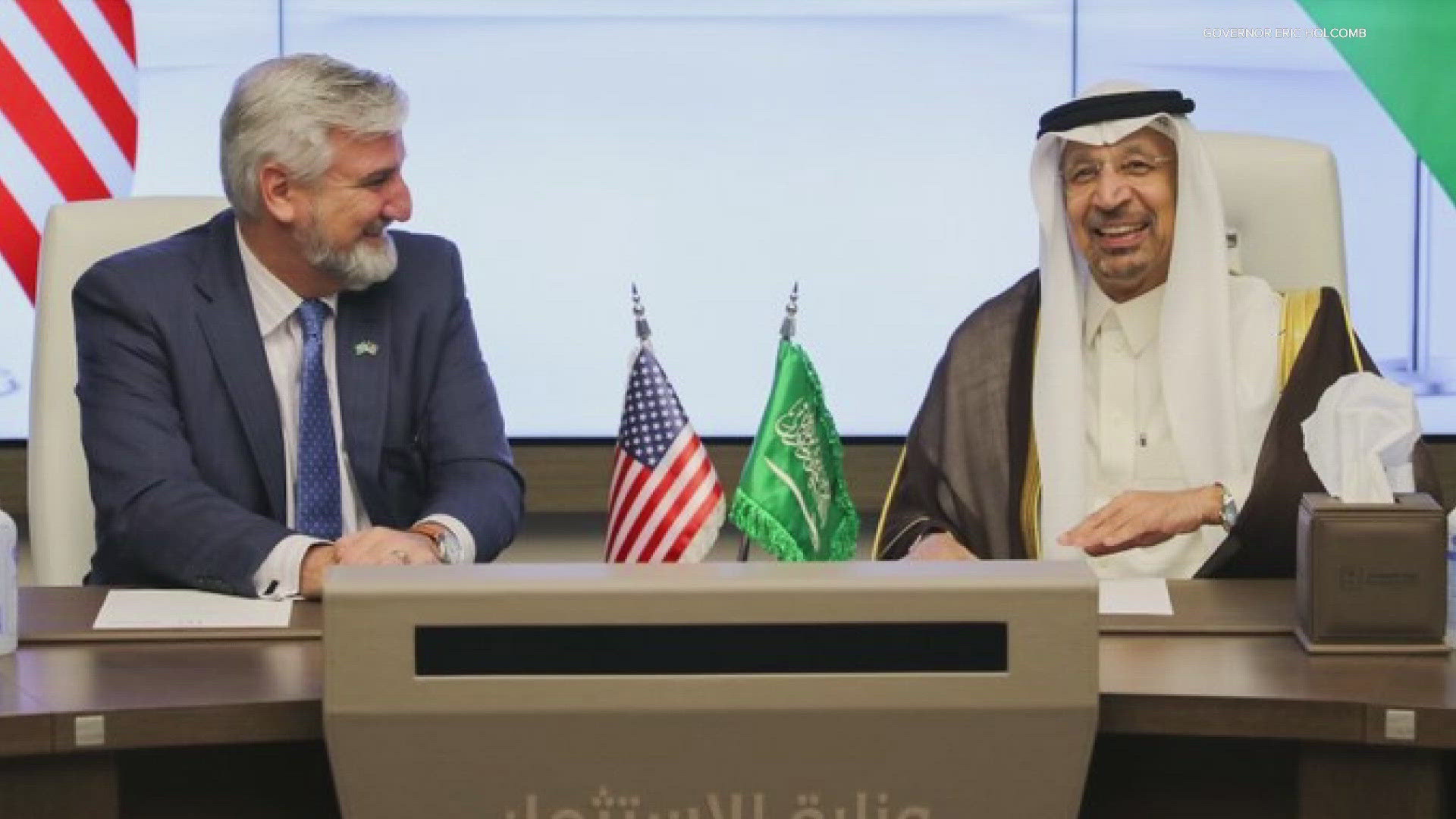INDIANAPOLIS — For the past four decades, I've covered the Indiana General Assembly as a reporter and monitored it as a columnist and publisher. What occurred on the House floor and out in the Statehouse hallways last week has been described as a "racial" clash. And I will tell you upfront that while there has been racial tension throughout Indiana's two centuries of statehood, this is the first time in my memory that it bubbled up so publicly at the Statehouse.
It appears to have begun during a debate about a St. Joseph County school transportation bill with State Rep. Greg Porter, D-Indianapolis, objecting and then walking off the House floor. State Rep. Vernon Smith of Gary had declared the United States to be a "racist nation." That was met with booing and catcalls, with Republican State Rep. Jim Lucas stalking off the House floor. Multiple reports described a hallway shouting match between State Reps. Sean Eberhart, R-Shelbyville, and Vanessa Summers, D-Indianapolis.
"Everybody over there is racist and discriminatory," Summers told the IndyStar of House Republicans. "Those that aren't and are not standing up for what's right, they’ve got white privilege and they’re racist too." Rep. Lucas's involvement came after he had posted several racially-motivated memes on his Facebook page as recently as last summer.
This came under the first-year leadership of House Speaker Todd Huston, R-Fishers, who quickly described himself as "embarrassed" by the incident, adding, "I’m committed today to increase focus on maintaining decorum, civility and professionalism in this institution.”
The Indiana Black Legislative Caucus called for diversity training, with its leader, State Rep. Robin Shackleford, D-Indianapolis saying, "We can't tell who all is racist over there." House Minority Leader Phil GiaQuinta, D-Fort Wayne, sought a different channel. "Reach out today or tomorrow and introduce yourself to someone on the other side of the aisle you haven't met yet."


There are several social overlays here. The most recent was last year's police homicide of George Floyd in Minneapolis and the riots that erupted across the nation, as well as in Fort Wayne and downtown Indianapolis, where a number of windows remain boarded up.
Over the preceding five years, President Trump had introduced a new dichotomy in campaigning and governance, described as "racial dog whistles" by critics. This reintroduction of political coarseness had an impact. After Trump took office, I noticed reporting in newspapers across Indiana of shouting and shoving matches at public meetings in towns, cities and counties. Such incidents had been rare previously.
But racial strife in Indiana goes back centuries. Capitol and Washington Publisher Trevor Foughty, in an article in this week's edition of Howey Politics Indiana, walks through our state's racial history, beginning with territorial Gov. William Henry Harrison's determination to bring his slaves to Vincennes and opposition to this by the state's eventual first governor, Jonathan Jennings. When Indiana's Constitution was rewritten in 1851, just after the Fugitive Slave Act of 1850, it included Article 13, which prohibited Hoosier Whites from entering contracts with Hoosier Blacks. Gov. Joseph Wright was a proponent of recolonization of Blacks to Liberia.
Then there was the "second wave" of the Ku Klux Klan in the 1920s, which resulted in its takeover of the Statehouse, including Gov. Ed Jackson. While the “first wave” in the former Confederate states was aimed at disabling Reconstruction and denying African-American rights, the KKK which took over the state politically in the 1920s was "less overt in its use of racially-charged rhetoric," Foughty explained. "Its tactics more resembled a social club focused on community service than a militaristic hate group, and very importantly, its iconography focused on the American, not the Confederate, flag."
The KKK faded as a political power in the state following the murder conviction of Grand Dragon D.C. Stephenson in 1925, though discrimination continued across the state for the next 40 years. The last of seven lynching events occurred in Marion in 1937, claiming 15 lives. A common story I heard as a young reporter at the Statehouse was how Black legislators from Gary and South Bend were not welcome in down state restaurants until they arrived in Indianapolis. It took the Civil Rights movement of the 1960s to end that.
Foughty concludes that "the thread followed here is perhaps the best representation of the broad arc of our politics on race, because it shows that the idea of White supremacy in Indiana has often manifested itself not as violent mobs typically associated with the term, but as the mainstream politics of the masses."
Last August, Gov. Eric Holcomb reacted to the racial unrest ignited by the George Floyd slaying, vowing to become a "barrier buster" at this historic "inflection point." Holcomb explained, "To those who feel impatient and that we’re not moving fast enough on this journey, I get it. To those who subscribe to the late John Lewis’s, ‘Getting into some good trouble’, I get it. But John Lewis also knew the key to driving change was nonviolence.”
While Holcomb vowed to "shape change," he didn't raise the subject in his January State of the State address. Given the “take-a-deep-breath-moment” events at the Indiana Statehouse this past week, his silence should be seen as a missed opportunity.
The columnist is publisher of Howey Politics Indiana at www.howeypolitics.com. Find Howey on Facebook and Twitter @hwypol.



